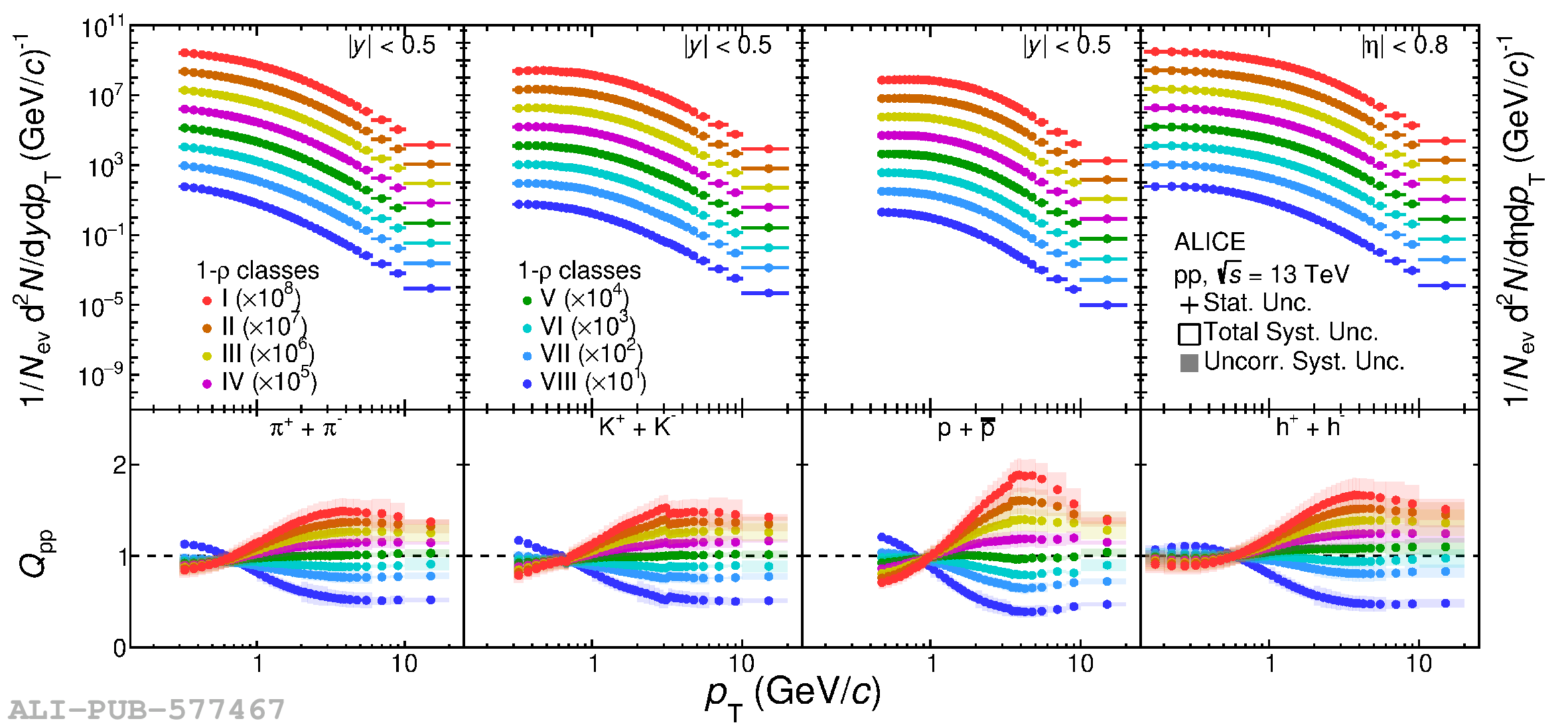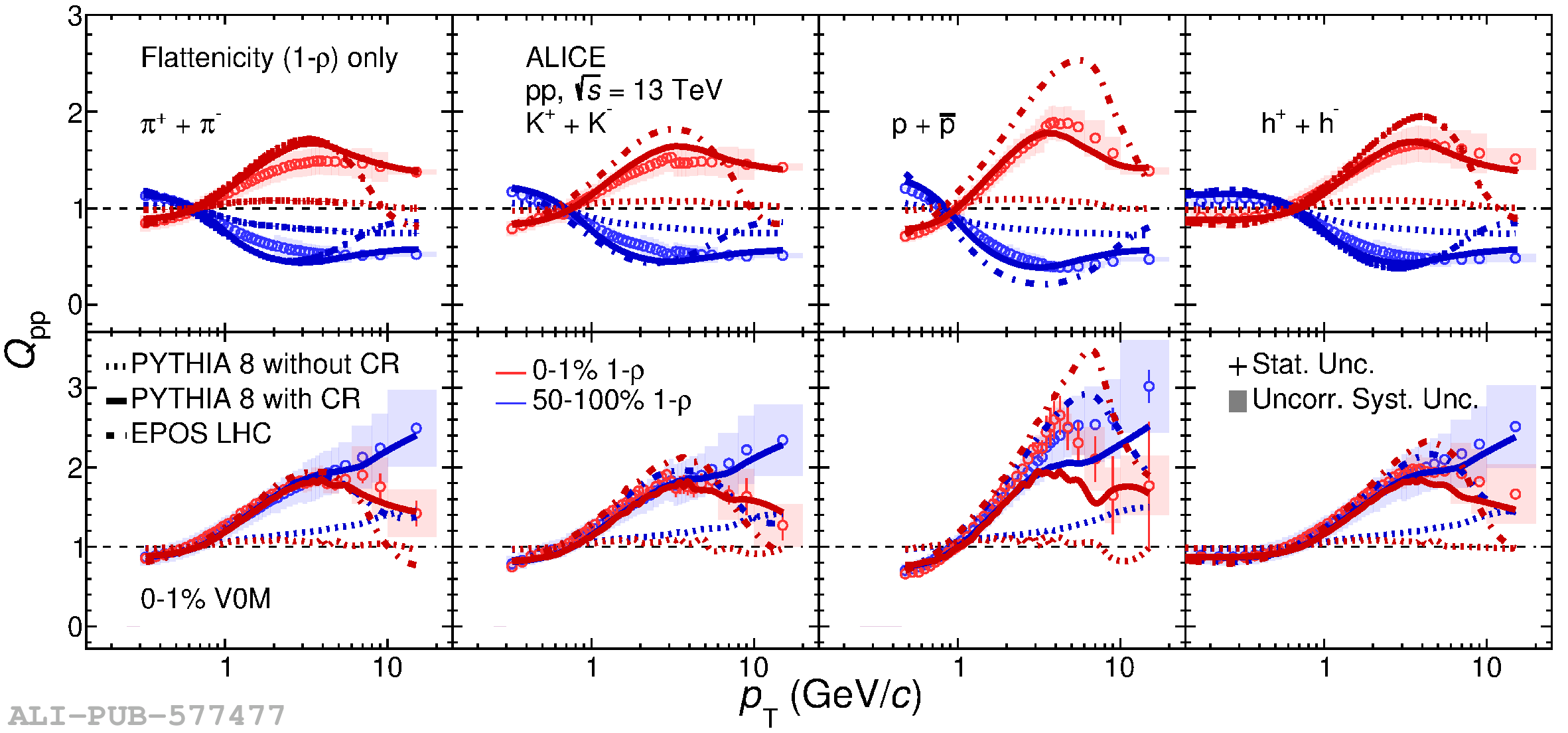This paper reports the first measurement of the transverse momentum ($p_{\mathrm{T}}$) spectra of primary charged pions, kaons, (anti)protons, and unidentified particles as a function of the charged-particle flattenicity in pp collisions at $\sqrt{s}=13$ TeV. Flattenicity is a novel event shape observable that is measured in the pseudorapidity intervals covered by the V0 detector, $2.8<~\eta<~5.1$ and $-3.7<~\eta<~-1.7$. According to QCD-inspired phenomenological models, it shows sensitivity to multiparton interactions and is less affected by biases toward larger $p_{\mathrm{T}}$ due to local multiplicity fluctuations in the V0 acceptance than multiplicity. The analysis is performed in minimum-bias (MB) as well as in high-multiplicity events up to $p_{\mathrm{T}}=20$ GeV/$c$. The event selection requires at least one charged particle produced in the pseudorapidity interval $|\eta|<~1$. The measured $p_{\mathrm{T}}$ distributions, average $p_{\mathrm{T}}$, kaon-to-pion and proton-to-pion particle ratios, presented in this paper, are compared to model calculations using PYTHIA 8 based on color strings and EPOS LHC. The modification of the $p_{\mathrm{T}}$-spectral shapes in low-flattenicity events that have large event activity with respect to those measured in MB events develops a pronounced peak at intermediate $p_{\mathrm{T}}$ ($2<~p_{\mathrm{T}}<~8$ GeV/$c$), and approaches the vicinity of unity at higher $p_{\mathrm{T}}$. The results are qualitatively described by PYTHIA, and they show different behavior than those measured as a function of charged-particle multiplicity based on the V0M estimator.
Phys. Rev. D 111, 012010 (2025)
HEP Data
e-Print: arXiv:2407.20037 | PDF | inSPIRE
CERN-EP-2024-205
Figure group










